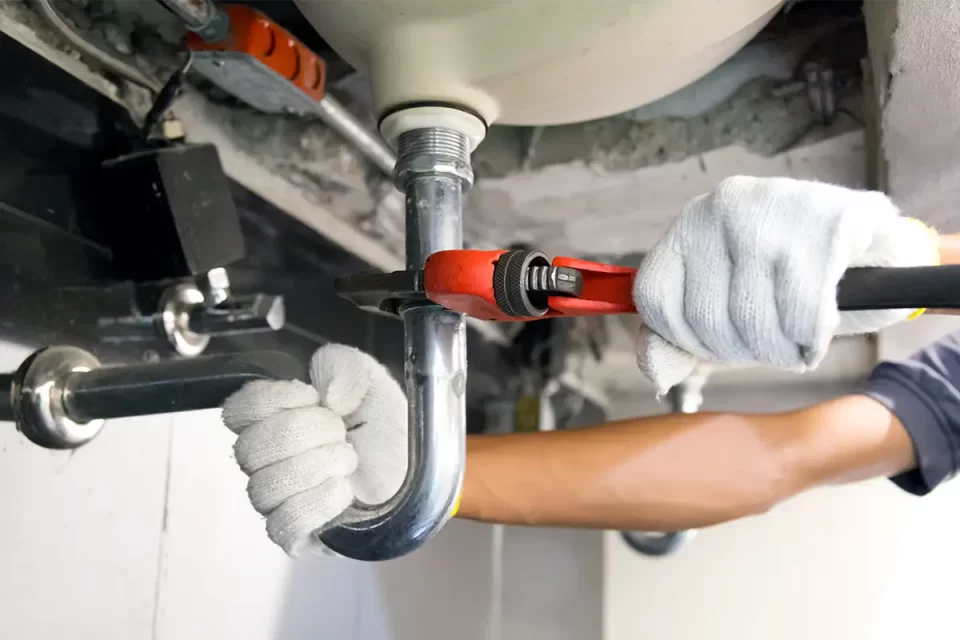Sometimes plumbing problems vary from simple solutions to quite complicated ones, requiring highly specialized knowledge. Experienced plumbers use experience and methodology to determine what causes most complicated plumbing issues. In cases where leaks are inside the walls and persistent draining problems, seasoned plumbers have ways to diagnose them.
1. Initial Evaluation and Interview
For any seasoned plumber looking to diagnose the issue, the first thing to do would be gathering all detailed information. They usually start with interviewing the homeowner or business to understand the history of the problem. Some questions they may ask are about when the problem first appeared, if it’s a recurring problem or a one-time occurrence, and whether previous repairs have been made on the system.
These questions provide plumbers with the context and immediately eliminate some possible causes.
2. Visual Inspection
After gathering all the information, the plumber will make a detailed visual inspection. This involves checking exposed pipes, fixtures, and appliances such as sinks, showers, toilets, and water heaters. They look for visible signs of leaks, rust, corrosion, or water damage. In older buildings, the inspection may also focus on outdated materials that could be the root cause of the problem, such as galvanized pipes.
These should now be apparent to even inexperienced plumbers, as any more serious problems can still be detected by water discoloration on the ceilings or walls.
3. Additional Diagnostic Equipment
Plumbers use additional equipment, including technology, when detecting issues that are not discernible to the human naked eye. The primary instruments used for diagnosis include
Leak Detection Devices: These rely on sound waves to determine the water leak inside underground pipes or behind walls.
Thermal Imaging Cameras: These cameras detect temperature changes that result in hidden leaks or water damage.
Video Pipe Inspection: Plumbers insert a camera into the pipes so one can see the inside and get a live view, especially helpful when there’s a diagnosis of a blockade or identifying pipe damage below ground or out of access.
These tools allow seasoned plumbers to locate the problem without unnecessary damage to walls or floors.
4. Water Pressure Testing
Water pressure problems are often a sign of a much larger plumbing issue. Water pressure that is too high may cause leaks and, eventually, lead to pipes degrading over time. Low pressure may be a sign that there is a blockage or major leak somewhere in the system.
An experienced plumber would begin with a water pressure test to check if the system is within the range of normal pressure. A very simple and effective check in determining whether a problem could be a malfunctioning pressure regulator, for instance.
5. Systematic Isolation of the Problem
Once the plumber obtains enough information using instruments and checkups, he begins gradually isolating the cause of the problem. Quite commonly this is achieved by deactivating sections of plumbing as a means to draw more specific limits around his suspicion. Testing this manner of one area at time helps them, decide if indeed it is an issue relating to the plumbing in any regard to either drain supply, or a potential matter within a single fixture.
For example, if there is a problem with water pressure in several parts of a house, the plumber can isolate parts of the house to see if the problem continues. If it occurs only in one section, it may be a leak or blockage in that specific area.
6. Hydraulic Testing for Drainage Issues
Some of the most painful plumbing problems to diagnose sometimes present as clogged or slow drains. To debug such issues, plumbers perform hydraulic testing. Hydraulics is forcing water through the drainage system just to see how it flows and to determine if the system has a blockage whenever water backs up. More than that, if these snaking tools fail in a standard way, this could call for a video inspection aimed at locating the blockage exactly.
7. Corrosion or Pipe Damage
The common culprit behind complex plumbing issues of an older home is corrosion or pipe damage. Plumbers check for:
- Presence of rust or corroded pipes
- Leaks or bursting of the pipes
- Presence of mineral deposits within the pipes restricting water flow
If it is a case of broken pipes, expert plumbers may recommend changing the pipes if the pipes are very damaged or of materials prone to causing future troubles such as lead or galvanized steel
8. A Full-Proof Solution
The plumber explains the nature of the problem to the homeowner after the diagnosis. A professional plumber will make a detailed plan for solving the problem and may include long-term solutions instead of temporary fixes. For example, they may recommend some measures to prevent further complications such as installing a water softener in places that are known to have hard water and replacing the whole plumbing systems in older buildings. Contact Whiteley Plumbers for more information.
More often than not, solving the issue necessitates experience, proper equipment, and a step-by-step approach. The professionals, who are skilled plumbers, have depended on their education, high technology, and decades of working experience to identify the cause of plumbing issues in detail quickly. According to their skill, they do not just address the problem at hand but also make sure that the whole plumbing system operates securely and without any issues for a long time to come.

